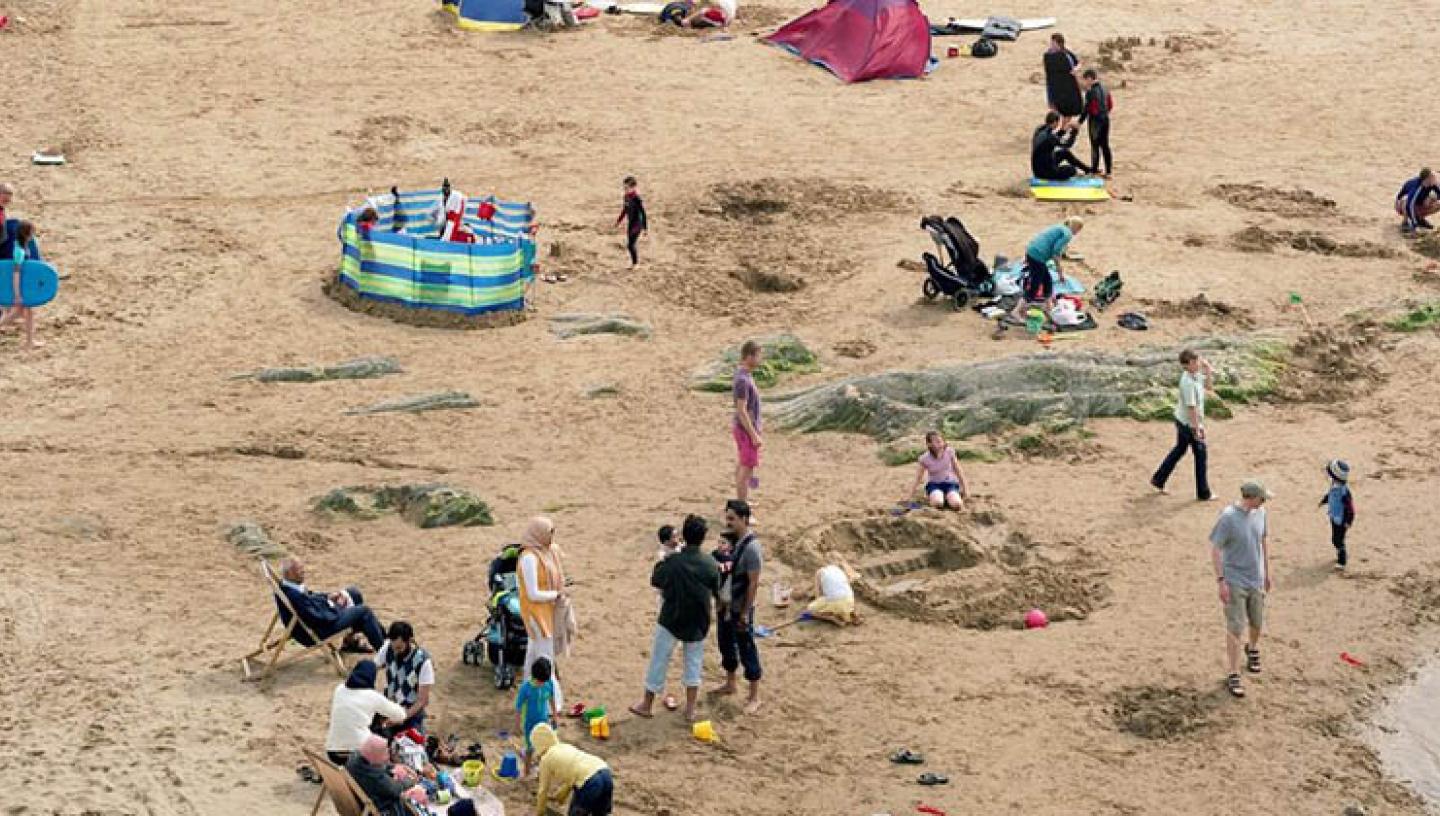
10 things you didn't know about the Great British Seaside
The British seaside is a national institution: home of fish and chips, buckets and spades, and of course, socks and sandals. Despite the UK’s unpredictable weather, we flock to the beach on a summer’s day. Did you know these surprising facts about our well-loved tradition?
1. The name of the Flake ‘99’ ice cream has nothing to do with its price.
At one point the Cadbury classic would have cost 99p, but due to inflation, it now costs much more. No one is entirely sure where the name comes from, but one claim is that it was coined by Stefano Arcari, who opened a shop in 1922 at 99 Portobello High Street in Scotland, and used to break a large Flake chocolate in half and stick it in an ice cream.
2. Up until the 1980s, fish and chips were served wrapped in newspaper to save costs, but this was later deemed unhygienic and banned.
The current Guiness World Record for the largest serving of fish and chips is 54.99 kg (121 lb 3oz) and was made by Resorts World Birmingham (UK) on 9 February 2018.
3. Six miles long and using over one million light bulbs, the Blackpool Illuminations first began in 1879.
The tradition for a celebrity to turn on the Illuminations didn’t begin until 1934 with Lord Derby. The line-up of celebrities in the early noughties to turn on the Blackpool Illuminations is a strong reflection of the era’s big hitters: Gary Barlow in 1999, Westlife in 2000, Steps in 2001, Ronan Keating in 2002, Blue in 2003, and Geri Halliwell in 2004.
4. Blackpool’s illuminations, though famous, were not in fact the first.
Britain’s first illuminations belonged to Morecambe, which was also the birthplace of Bingo and rivalled Blackpool as the northern English seaside resort from the late 1880s.
5. But which town was Britain’s first seaside resort? That was Weymouth.
In 1789 King George III started a fashion for sunbathing there. Unrelatedly, it was also the place where the Black Death was introduced into England in 1348.
6. First the seaside holiday, then the seaside holiday camp. Billy Butlin opened his first camp at Ingoldmells near Skegness in 1936.
The ‘Redcoats’ were not originally part of his plans, but came about after an associate, Norman Bradford, took up a microphone to entertain the campers who didn’t know what to do.
7. The ancient Punch and Judy show became a Victorian seaside favourite.
Its enduring popularity is largely due to its ability to adapt to the times. One Punch and Judy company gave hundreds of shows to the troops during the Second World War, with Punch in battledress and a gas mask, Judy in a cap, and a Hitler doll instead of the hangman Jack Ketch who is always hanged by Punch.
8. During the 1960s, seaside towns such as Margate, Brighton, Bournemouth and Clacton saw violent clashes between two youth subcultures: the Mods and the Rockers.
The BBC reported on 18 May 1964 in Brighton: “More than 1,000 teenagers were involved in skirmishes on the beach and the promenade last night.”
There was fierce rivalry and fighting between the scooter-riding, sharp-suited Mods, and the biker jacket-wearing Rockers. However, much of the drama was generated by a media frenzy, who went into ‘moral panic’ and exaggerated much of the violence.
9. Romans wore socks with sandals at least 2,000 years ago.
The earliest evidence of wearing socks and sandals is documented at the archaeological site between Dishforth and Leeming in North Yorkshire, England. Perhaps their feet got cold.
10. ‘Oh I do Like to Be Beside the Seaside’ was made famous by the music hall performer Mark Sheridan who first recorded the song in 1909.
Sadly, Sheridan later committed suicide at the age of 53 after a show of his was poorly received.
Banner image: Woolacombe Bay, Devon, 24 May 2008 © Simon Roberts, courtesy of Flowers Gallery London
![New Brighton, Merseyside, 'Last Resort, 1983-85 [MP07] (Magnum Photos)](/sites/default/files/styles/max_width_1440/public/LOA2225%20New%20Brighton%2C%20Merseyside%2C%20%27Last%20Resort%2C%201983-85%20%5BMP07%5D%20%28Magnum%20Photos%29%20%28LON6985%29_0.jpg?itok=OV_UHvd3)




